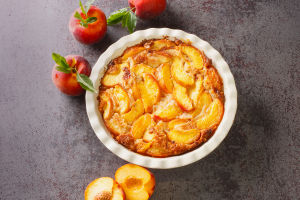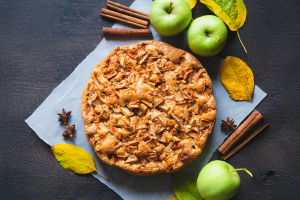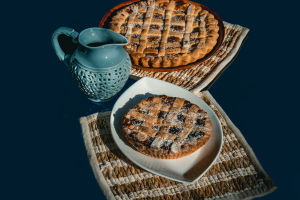Every baking enthusiast among our Lykkers knows the magic: flour, eggs, soft butter, and sugar come together, and just like that—a delicious shortcrust pastry is born. This humble yet essential base is the foundation for countless sweet treats, from delicate tarts to melt-in-your-mouth cookies.
But did you know that not all shortcrust is created equal? There are several variations, each with its own unique texture, flavor, and ideal use. Let’s dive into the different types of shortcrust pastry and where they shine best.
Shortcrust Types and Variations
Classic Shortcrust
This version is often mistaken as a generic pastry base, but it follows a very specific process. The preparation begins with very soft butter, followed by sugar and eggs.
Only at the end is flour added. The dough is then chilled before use. This technique ensures a tender, well-structured texture, perfect for both tarts and cookies. The sugar used is granulated, and it includes both whole eggs and yolks.
Shortcrust Without Dairy Butter
For those avoiding dairy, several alternatives exist. One option includes soft cheese, while others use various plant-based oils. A popular version uses coconut oil, which adds a subtle tropical aroma. These options retain the texture of traditional recipes while adjusting for dietary needs.
Crumbly Shortcrust (Sablée)
This popular method starts with cold butter and flour mixed until the texture resembles fine crumbs. The aim is to coat the flour in butter to protect it from absorbing moisture too quickly. Once the desired texture is achieved, eggs and sugar are added. While whole eggs are common, some recipes adjust ratios depending on the intended result. It's a very forgiving and reliable base.
Sweetened Shortcrust (Sucrée)
This variation is typically made by creaming soft butter with powdered sugar until smooth. It often includes ground nuts such as almonds, enhancing both flavor and texture. The result is a delicate dough that’s especially good for desserts requiring a soft, rich base.
Milano Shortcrust
This version uses precise ratios for consistency. Butter and sugar are equal in weight, and each represents half the weight of the flour. The egg amount equals 10% of the total weight of the other ingredients. For example: 250g flour, 125g sugar, 125g butter, and 50g eggs. The mixing method can follow the classic or crumbly approach.
Piped Shortcrust
Known for its soft, creamy consistency, this shortcrust is piped rather than rolled. Powdered sugar is used instead of granulated, and the butter must be whipped until fluffy. Eggs, at room temperature, are added gradually, followed by flour. This dough produces elegant, bakery-style cookies with defined shapes and a melt-in-the-mouth texture.
Napoli Shortcrust
This "dry" shortcrust has a firm, less elastic structure, making it ideal for supporting moist or runny fillings. A variation includes the addition of ground nuts, often almonds. It’s a practical base that holds up well during baking and cutting.
Cocoa Shortcrust
This dough includes cocoa powder and therefore uses slightly less flour to balance the dry ingredients. The method can be classic, crumbly, or piped. It’s ideal for chocolate-flavored bases that stay tender and rich after baking.
Brittany Shortcrust
Soft and slightly salty, this dough is often used for soft tart bases. It includes powdered sugar and only yolks, plus starch in many versions. The butter and sugar are creamed first. Some versions include a small amount of baking powder. Freezing the dough before baking is recommended for best results.
Brittany Style with Cooked Yolks
This variation uses cooked yolks in place of raw ones, resulting in an especially delicate dough. It's ideal for mousse bases and delicate cookies. The process is similar to the original Brittany version, with a slightly different texture thanks to the cooked yolks.
Ovis Mollis Shortcrust
Known for producing feather-light, crumbly cookies, this shortcrust uses cooked yolks in a relatively dry dough. Despite its richness in ingredients, the result feels light and refined. It’s a favorite for small, tender baked goods that break gently with each bite.
In Conclusion
Shortcrust pastry is far more than a basic dough—it’s a whole world of textures and flavors that varies by technique, ratio, and ingredients. Each variation has its unique charm and specific purpose, whether it's for a sturdy tart shell, elegant piped cookies, or delicate mousse bases.
Lykkers, exploring these different types is not only a treat for the taste buds but also a great way to enhance baking skills. Try them all and discover which one best fits your next creation.


